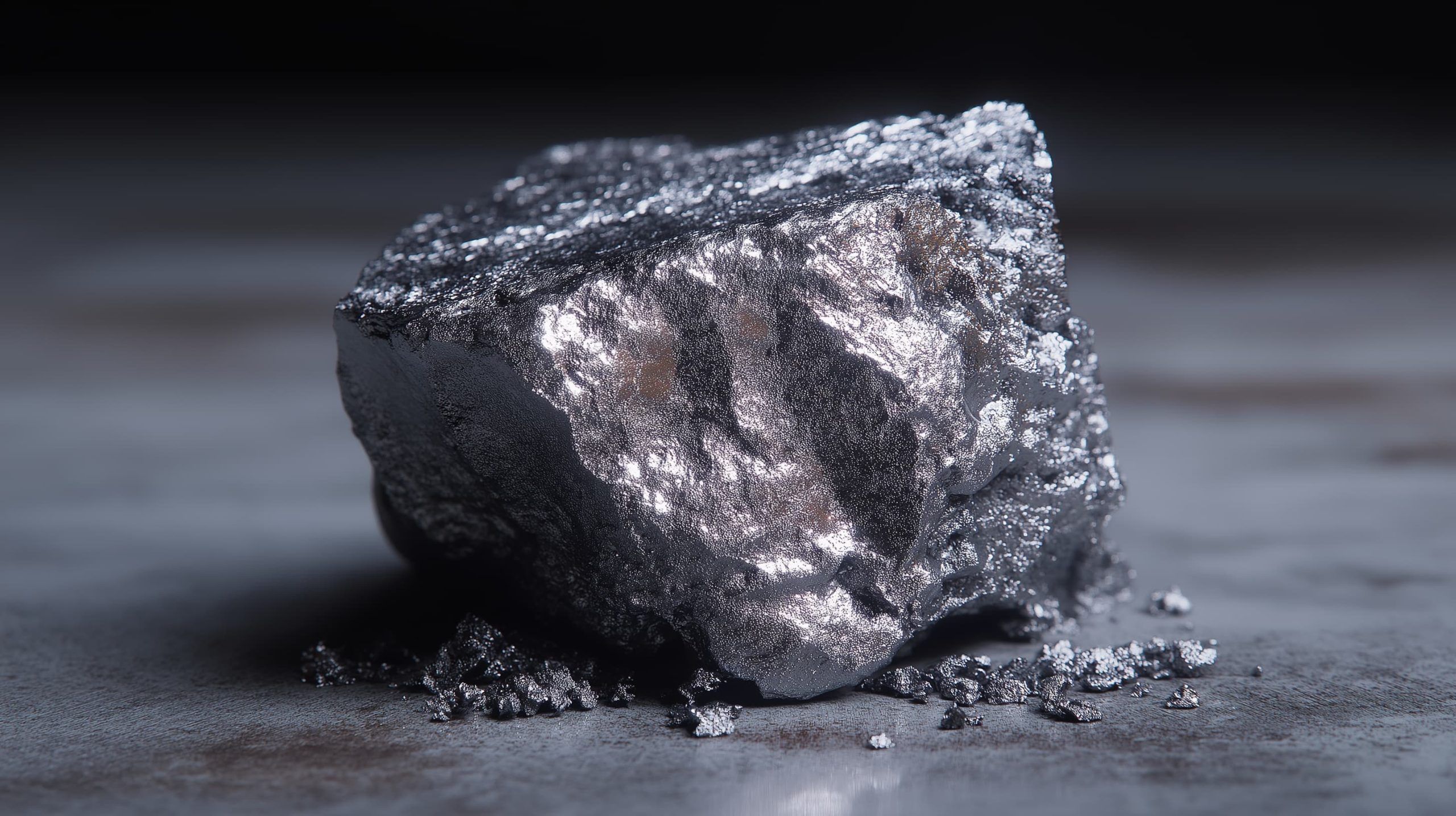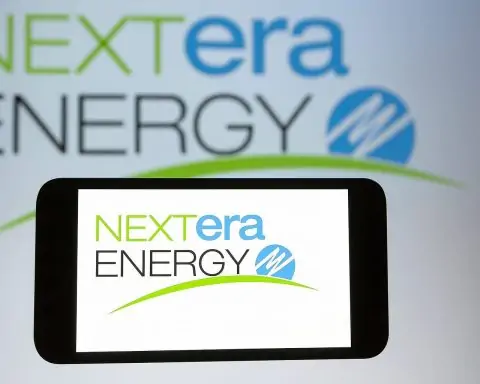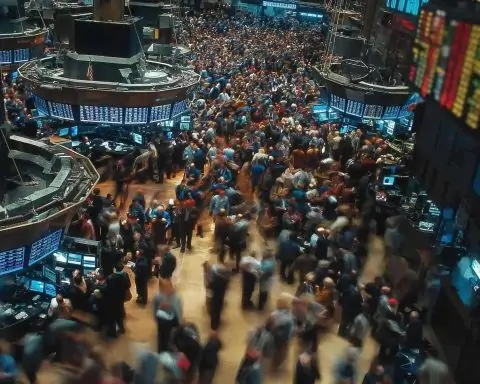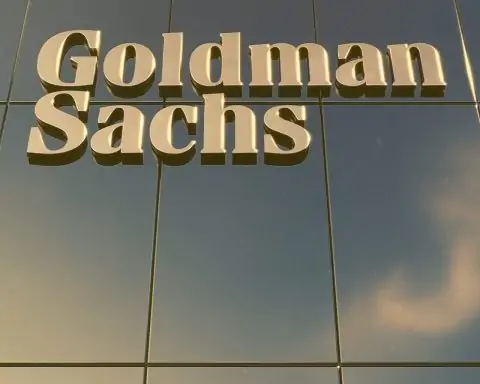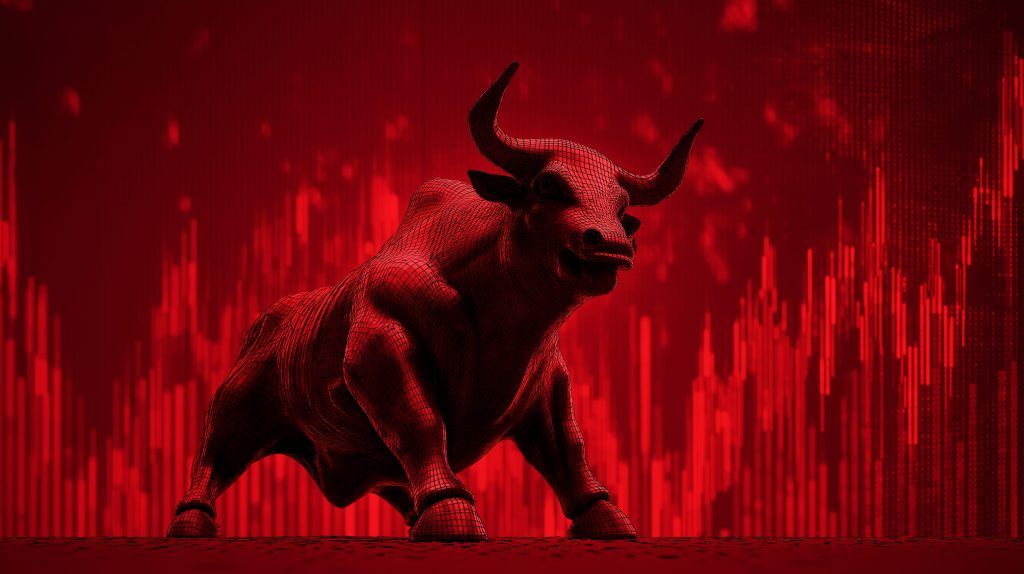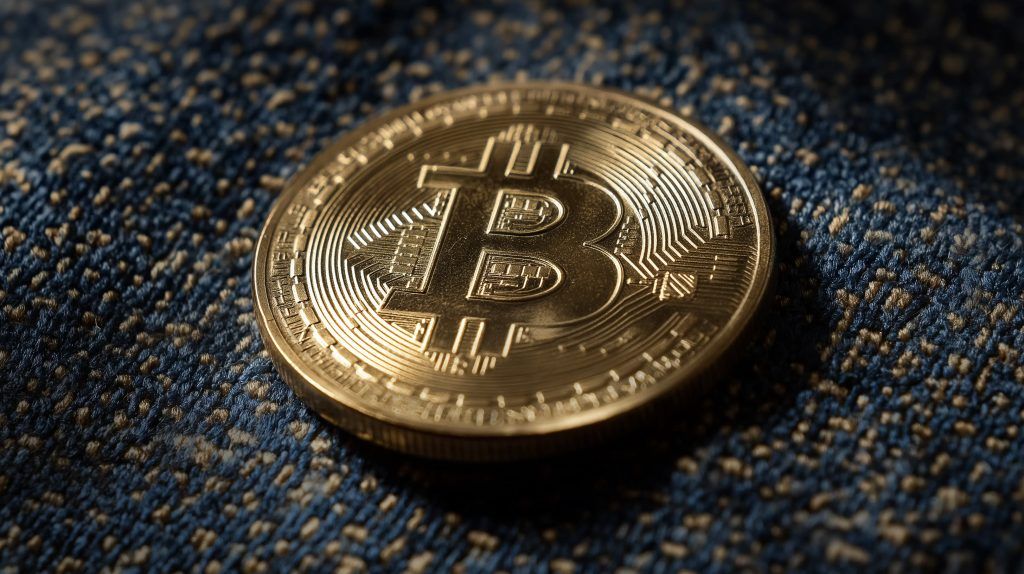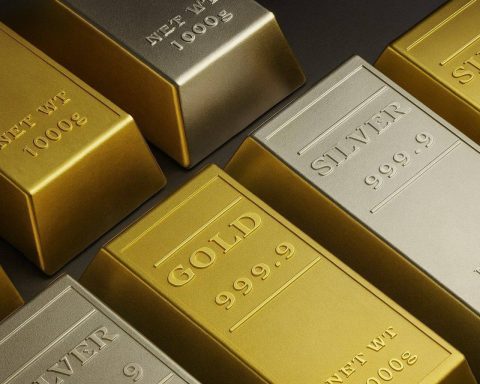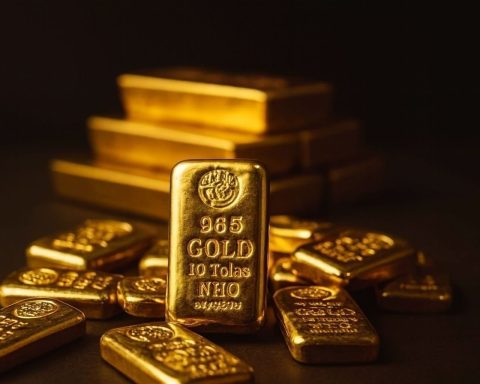- Gold surges to record highs: Spot gold pierced above $3,900 per ounce for the first time ever on Oct. 6, hitting ~$3,970 at one point [1]. The metal is up roughly 50% in 2025, driven by expectations of imminent U.S. Fed rate cuts, relentless central bank buying, and investors flocking to safety amid political and economic uncertainty [2].
- Silver at 14-year peak: Silver prices jumped to ~$48.5/oz, the highest since 2011, buoyed by gold’s momentum plus strong industrial demand and tightening supply [3]. The metal is on track for a fifth consecutive annual supply deficit (~117.6 million oz shortfall in 2025) [4].
- Platinum & palladium climb: Platinum hit ~$1,640/oz (a ~13-year high) and has soared over 80% year-to-date, outpacing gold and silver [5], thanks to a deep supply deficit and heavy stockpiling by China [6]. Palladium also spiked ~4% on Oct. 6 to ~$1,315 – its strongest level in over two years – amid improving auto demand sentiment.
- Geopolitical turmoil boosts safe havens: Investors are seeking refuge in precious metals as crises mount – from a prolonged U.S. government shutdown (now into its second week) [7] to a sudden government collapse in France that deepened political chaos [8]. Ongoing conflicts (the Middle East, Russia-Ukraine) and even concerns about Fed independence are stoking uncertainty [9].
- Rate cuts & inflation bets: Markets are pricing in Fed interest rate cuts of 0.25% in October and again in December [10], a bullish scenario for non-yielding gold. Rising bond yields in Japan (amid inflation pressures) and cooling U.S. economic data have bolstered the case for easier monetary policy [11]. Gold, which yields no interest, thrives in low-rate environments and during inflationary scares [12].
- Central bank gold rush: Global central banks continue hoarding gold as a reserve asset, providing a firm undercurrent of demand. Bullion’s record run has been underpinned by “sustained central bank purchases” [13] – with emerging-market banks diversifying away from the dollar. Analysts expect official sector buying to remain robust into 2026 (Goldman Sachs projects ~80 tons in 2025) [14] [15].
- Investors pile in – ETFs surge: Safe-haven and investment demand is surging. Gold-backed ETFs saw major inflows – nearly 588 metric tons added Jan–Sept (versus net outflows last year) [16] [17]. In fact, September saw the largest monthly inflows in over three years, as both institutional and retail investors rushed to hedge against turmoil [18] [19]. “As long as uncertainty levels are high, ETF flows should continue,” said SocGen’s commodities chief Michael Haigh [20]. Silver has likewise benefited from investment interest; it’s considered a “catch-up trade” after lagging gold, according to Aakash Doshi of State Street, who notes silver had underperformed for several quarters prior to mid-2025 [21].
- Supply and regulatory impacts: Tight supply constraints are amplifying the rallies. Platinum’s 2025 deficit is forecast near 966,000 oz – a shortfall “where demand exceeds supply, prices inevitably climb,” per the World Platinum Investment Council [22]. China’s outsized platinum imports (beyond its industrial needs) suggest strategic hoarding that’s worsening the squeeze [23]. In silver’s case, the U.S. added the metal to a draft “critical minerals” list, sparking speculation that strategic tariffs or stockpiling could come into play [24] – news that grabbed traders’ attention. Meanwhile, any mining disruptions (e.g. labor strikes or power issues in major producing countries) could further stress supply, though recently a major months-long strike at a top Mexican gold mine was resolved [25].
- Bullish forecasts abound: Many experts see further upside for precious metals. “We see both fundamental and momentum-based reasons for gold to rally further,” UBS wrote, now predicting $4,200/oz by year-end [26] [27]. HSBC concurred that gold “could trade above $4,000 per ounce in the near term,” citing geopolitical risks and fiscal uncertainties [28] [29]. Goldman Sachs just hiked its 2026 gold target to $4,900 and still sees risks “skewed to the upside” as Western investor demand grows [30] [31]. Even for silver, analysts note the metal’s structural deficit and expanding industrial uses (from solar panels to electronics) could propel further gains if the economic backdrop stays favorable. “Investors are navigating everything from shifting Fed policy to global political developments, and gold is playing its traditional role as a store of value,” observed Joseph Cavatoni of the World Gold Council [32], encapsulating the bullish sentiment across the precious metals space.
Record-Breaking Gold Rally Fueled by Fed Bets and Haven Demand
Gold’s 2025 rally hit fever pitch as the week began. On Monday Oct. 6, spot gold rocketed 1.8% to around $3,956/oz, after peaking at an all-time intraday high near $3,970 [33]. U.S. gold futures (Dec delivery) also settled ~1.7% higher at $3,976.30 [34]. This marked gold’s first decisive break above the $3,900 barrier – a milestone in a year that has already seen multiple record highs. Year-to-date, gold prices have surged roughly 50% [35], building on a 27% gain last year [36] [37]. The rally’s underpinnings read like a checklist of classic gold drivers: expectations of easier monetary policy, rampant safe-haven demand amid global strife, persistent central bank accumulation, and a weaker dollar [38].
Several catalysts converged to send gold into uncharted territory. Traders are increasingly convinced the Federal Reserve will start cutting interest rates imminently, perhaps as soon as the upcoming policy meeting [39]. Fed funds futures point to a ~93–95% probability of a 25 bps rate cut in October, and another in December [40] [41]. The Fed already delivered its first cut of the year in September [42] after aggressively hiking previously. The prospect of peaking and reversing rates is turbocharging gold because lower rates reduce the opportunity cost of holding non-yielding assets like gold – and also tend to pressure the dollar [43] [44]. Indeed, the U.S. Dollar Index has eased off its highs (despite a brief spike amid risk aversion [45]), adding further support to bullion. “Gold, which generates no interest, thrives in a low-interest-rate environment and during economic uncertainties,” noted a Reuters analysis of the rally [46] [47].
Safe-haven demand has been the other key pillar. A cascade of geopolitical and economic crises in early October sent investors scurrying for gold’s protection. In Washington, the U.S. government slipped into a partial shutdown on Oct. 1, as lawmakers failed to agree on funding. By Oct. 6, that shutdown was in its sixth day with no end in sight [48]. Vital government functions – from scientific research to economic reports – have been suspended [49], and the White House warned of mass furloughs if the impasse continues [50]. This standoff underscored fiscal dysfunction in the world’s largest economy, spooking markets and boosting gold’s appeal as a hedge. Simultaneously, an unprecedented political crisis in France erupted: on Oct. 6, France’s brand-new Prime Minister Sébastien Lecornu and his entire government resigned just hours after taking office, amid deepening turmoil in the French parliament [51]. The shock collapse raised the likelihood of new elections and prolonged instability in the Eurozone’s second-largest economy [52]. French markets plunged on the news, the euro weakened, and global investors grew jittery [53] [54] – all of which funneled more capital into gold.
Beyond these headline events, persistent conflicts have formed a background drumbeat boosting bullion. The Russia–Ukraine war drags on with no resolution in sight, and a flare-up of unrest in the Middle East has added to the geopolitical risk mix [55]. Such conflicts tend to drive a flight-to-quality into hard assets. Moreover, concerns about U.S. political interference with the Federal Reserve have emerged – an unusual factor supporting gold. Notably, reports that President Donald Trump attempted to fire Fed Governor Lisa Cook raised alarms about the Fed’s independence [56] [57]. Loss of central bank autonomy could undermine confidence in fiat currency management, a scenario in which investors often increase allocations to gold as a safeguard. “Conflict in the Middle East, the Russia-Ukraine war and concerns around the Fed’s independence have also driven safe-haven demand for gold,” Reuters noted, summarizing the multitude of worries lifting the metal [58].
All these drivers have created a potent bullish cocktail. “Investors are navigating everything from shifting Fed policy to global political developments, and gold is playing its traditional role as a store of value,” said Joseph Cavatoni, market strategist at the World Gold Council [59]. His observation reflects how gold is behaving exactly as its proponents would expect – as the go-to refuge in uncertain times. The breadth of support (from retail buyers to central banks) has given this rally extra longevity. Gold’s momentum is also feeding on itself, attracting trend-following funds. Marex analyst Edward Meir noted that with prices so close to the nice round figure of $4,000, “some of the funds might be trying to push it up to get to that mark” [60]. Indeed, gold’s record-shattering run has few precedents – the metal blew past $3,000 for the first time ever back in March, and exceeded $3,800 just in late September [61]. Now the $4,000 milestone is squarely in sight.
Market strategists and banks are racing to update their forecasts in light of gold’s relentless climb. UBS analysts now project gold will reach $4,200/oz by the end of 2025, citing a perfect storm of fundamental drivers and technical momentum [62] [63]. “We see both fundamental and momentum-based reasons for gold to rally further,” UBS said, pointing to supportive factors like low real interest rates, central bank buying, and strong investor inflows [64]. HSBC, in a note released Oct. 3, argued that gold could trade above $4,000 in the near term given the prevailing geopolitical risks and fiscal uncertainty. “Rallies can continue into 2026 aided by official sector buying; institutional demand for gold as a diversifier can stay robust,” HSBC added, though it cautioned that an unexpectedly hawkish Fed could temper the upside [65] [66]. Meanwhile, Goldman Sachs just revised its longer-term outlook – the bank hiked its December 2026 gold forecast from $4,300 to $4,900 per ounce [67]. Goldman’s analysts highlighted strong Western ETF inflows and ongoing central bank purchases as justification for the upgrade [68] [69]. They noted that private-sector investors seeking diversification could drive gold demand even beyond what their models (tied mainly to interest rate expectations) predict [70] [71]. Crucially, Goldman does not see the recent surge as overdone – after a big September jump, ETF holdings have only now caught up to Goldman’s “rates-implied” projections, suggesting the inflows are fundamentally grounded, not just speculative overshoot [72].
In the near term, much hinges on central banks and economic data. If the Fed delivers the rate cuts investors anticipate, it could validate gold’s spike and potentially push prices over $4,000. Conversely, any signal of hesitation by the Fed – for example, if inflation surprises on the upside or if the Fed worries about financial stability – could momentarily cool the rally [73] [74]. For now though, the gold bulls remain firmly in control. With bullion sitting at all-time highs and up ~47–51% year-to-date [75] [76], the stage is set for a finish to 2025 that few could have imagined just a year ago.
Silver Surges to 14-Year High on Industrial Strength and Supply Squeeze
Often dubbed “poor man’s gold,” silver is gleaming in its own right, riding on gold’s coattails but also capitalizing on unique drivers. On Oct. 6, spot silver leapt about 1.4% to $48.66/oz, marking its highest price since May 2011 [77]. That’s a level not seen in over 14 years, back when silver spiked amidst post-financial-crisis stimulus. The white metal has rallied roughly 60–65% year-to-date, vastly outperforming broader commodities and even equities. As of this week, silver prices have more than doubled from their 2023 average in the low $20s.
Silver’s recent spike, like gold’s, reflects safe-haven and monetary demand, but importantly it is underpinned by very strong industrial fundamentals. “Its rally is supported by the same factors as gold, as well as strong industrial demand and a tight spot market,” Reuters noted in a bullish analysis [78]. Silver straddles the line between precious and industrial metal – and right now both sides of that equation are exceptionally supportive. Investors seeking a hedge against inflation and instability have piled into silver alongside gold. At the same time, manufacturers in sectors like electronics, solar energy, and automotive continue to consume silver at a growing pace. This one-two punch of investment and industrial demand has created a potent squeeze.
On the supply side, the silver market is facing chronic tightness. 2025 is on track to be the fifth consecutive year in which silver demand outstrips supply [79]. The Silver Institute projects a 117.6 million troy ounce supply deficit this year [80], following large deficits in previous years. Global mine output and recycling haven’t kept up with surging consumption (especially as solar panel production, a silver-intensive industry, has boomed). These structural deficits have steadily eroded above-ground inventories. Signs of a “tight spot market” are evident in high silver lease rates and premiums, indicating users are scrambling to secure physical supply. This backdrop of scarcity amplifies price moves – when investors started buying in size this year, there was simply not enough slack in the system to absorb the demand without prices jumping.
Silver also got a jolt from an unexpected regulatory development: the U.S. government included silver on a draft list of “critical minerals.” In October, news emerged that silver’s name on this list has “sparked speculation over potential tariffs” or other strategic measures [81]. The logic is that if silver is deemed critical for national security (likely due to its importance in electronics and energy technology), the U.S. might incentivize domestic sourcing or impose trade restrictions to secure supply. Such talk, even preliminary, put an additional bid under silver as traders bet on increased stockpiling or government-supported demand. While no policy changes have actually occurred yet, the mere prospect of new trade or industrial policies favoring silver has been “drawing close attention from the market,” according to analysts [82].
Momentum and psychology are also at play. Silver spent much of 2023 and early 2025 lagging gold’s performance; the gold/silver ratio had climbed to historically high levels, implying silver was very cheap relative to gold. That dynamic began to shift mid-2025. “Silver is a bit of a catch-up trade as it had been underperforming gold for several quarters prior to mid-2025,” explained Aakash Doshi, global head of commodities strategy at State Street [83]. Once gold started breaking records, late-coming investors looked for value elsewhere in the precious metals complex – and found silver particularly attractive. With its smaller market size and higher volatility, silver often sees exaggerated moves once it finally gets going, a pattern we’re witnessing now.
Importantly, industrial demand for silver remains robust, providing a fundamental floor under the price. The push for clean energy has been a boon: silver is a key component in photovoltaic (solar) cells, and 2025 is shaping up to be another record year for global solar installations. Electronics and 5G technologies also require substantial silver. Even the auto sector is using more silver (in EVs, for instance). This broad-based demand means that unlike some past speculative spikes, the current silver rally has legs grounded in real-world consumption, not just investor whims. Analysts note that if the global economy avoids a serious recession, silver’s industrial uptake will stay strong – and any additional monetary or investment demand then simply turbocharges the price because the baseline consumption is already depleting available supply.
All told, silver’s ~$48/oz price is the highest in 14+ years, but still below its all-time peak around $50 reached in 2011. That previous spike was short-lived, as a speculative frenzy (the tail end of a commodity super-cycle) gave way to a crash. This time, the narrative is somewhat different: while there is certainly a speculative element now, the support from fundamentals (supply deficits, new uses, etc.) appears more solid. Of course, silver is notoriously volatile, often swinging more wildly than gold. Sharp pullbacks can’t be ruled out – some technical indicators show silver (and gold) in “overbought” territory in the short run, with RSI levels hitting extreme highs [84]. Indeed, after hitting $48+, silver briefly eased back to ~$46 on Oct. 7 amid some profit-taking [85]. But so long as the macro backdrop remains one of “low rates + high uncertainty,” dips are likely to be viewed as buying opportunities by both industrial users and investors.
Platinum and Palladium Join the Rally – Supply Deficits Send Platinum Soaring
Often overshadowed by gold and silver, the platinum group metals (PGMs) have been quietly on fire in 2025, with platinum emerging as perhaps the strongest performer of all. Platinum prices have climbed roughly 80% year-to-date, far outpacing gold (~45–50% YTD) and silver (~60%+) [86]. This week platinum made a new multi-year high: futures hit $1,638.70/oz on Oct. 6, the highest level in over 12 years [87] [88] (spot platinum similarly traded around $1,625–1,630, peaks not seen since 2013). Such levels would have seemed ambitious even a few months ago; now they are reality as platinum rides a unique convergence of supply tightness, resurgent demand, and investor rotation.
The platinum market’s fundamentals are arguably the most bullish among major metals at the moment. According to the World Platinum Investment Council (WPIC), 2025 is expected to see a huge supply deficit – on the order of 966,000 ounces [89]. To put that in perspective, that’s nearly 15% of annual platinum demand. It follows a 2024 deficit of ~1 million oz and a 2023 deficit near 900k oz [90] [91], meaning the platinum market has been undersupplied for three years straight. These shortfalls have rapidly eroded above-ground inventories, historically built up when platinum was in surplus earlier in the decade. By WPIC estimates, platinum stockpiles will fall to just ~2.5 million oz by the end of this year – equivalent to only a few months of demand cover [92]. When a market runs persistent deficits and inventories dwindle, prices tend to rise – 2025 has been testament to that fact [93].
Several factors are crimping platinum supply. South Africa, which accounts for ~70% of mine production, has faced output issues due to power shortages, aging mines, and labor disruptions. Rolling electricity blackouts (load-shedding) have intermittently idled shafts. Russia, another major PGM source, is under sanctions and investment in its mining sector has stagnated. On the demand side, platinum is benefiting from both traditional and emerging uses. The auto industry is the largest consumer (platinum is used in catalytic converters for diesel engines and, to some extent, gas hybrids). With global auto sales recovering in 2025 and new emissions regulations requiring better catalytic converters, automakers’ platinum needs have ticked higher [94] [95]. Notably, some substitution is occurring: in recent years, expensive palladium was partly swapped into cheaper platinum in gasoline vehicle catalysts – that trend is ongoing and supports platinum demand as long as its price stays below palladium’s. Hybrid vehicles, which run cooler exhaust systems, actually use more platinum than palladium, giving platinum a boost as hybrid market share grows [96].
Beyond autos, platinum’s other demand pillars are also strengthening. The metal is crucial in the chemical and petroleum sectors (as a catalyst), and for jewelry (platinum jewelry demand, especially in China and India, has been solid this year thanks to higher incomes and bridal trends). A particularly exciting area is hydrogen energy: platinum is a key component in electrolyzers (which produce hydrogen) and in hydrogen fuel cells (which use platinum catalysts to generate electricity). As the world invests in green hydrogen technology, platinum stands to benefit from a new source of industrial demand. All these factors combined mean platinum demand is rising just as supply is constrained – a textbook recipe for a price rally.
Investment and speculative flows have amplified the move. Platinum had been undervalued relative to gold for years – at one point in 2022–23, it traded at barely 40% the price of gold. This attracted contrarian investors. “The relative value of platinum compared to gold has contributed to its price momentum, as many contrarians switched to platinum due to its affordability,” noted an InvestorBrandNetwork report [97]. Essentially, some investors saw platinum as a bargain hard asset with similar diversification merits as gold, and started accumulating it. Now, with platinum’s uptrend well-established, momentum traders have jumped in too. Online search interest in buying platinum has exploded, hitting multi-year highs according to Google Trends data [98] [99]. This suggests retail investor enthusiasm, which can signal late-stage exuberance but in the interim provides fresh fuel for the rally.
One cannot discuss platinum without mentioning China’s role. China has been stockpiling platinum aggressively in 2025, importing far more than its domestic consumption would dictate [100] [101]. This suggests strategic hoarding – possibly anticipation of future higher demand (e.g. for fuel cell development) or simply a desire to hold a hard asset. Chinese buyers have essentially absorbed a large chunk of available supply, tightening the market for everyone else. It’s a parallel to central banks buying gold – just as official gold purchases set a floor under gold prices, China’s platinum buying spree has helped propel platinum upward [102]. Analysts liken it to a “stealth” central bank: when the world’s biggest commodity consumer quietly builds inventory, it can significantly move prices.
As a result of these forces, platinum’s performance in 2025 has been stellar. The metal’s ~82% year-to-date gain [103] outshines even high-flying tech stocks. From under $900 last year to over $1,600 now, platinum has firmly shaken off its long slump (it spent much of the past decade languishing well below its 2008 record high of ~$2,250). Some are even calling platinum the “star” of precious metals this year [104]. Of course, with such a rapid run-up, caution is warranted. Technical metrics show platinum as overbought in the short term (daily and monthly RSI readings in the 70s-80s) [105]. A breather or correction could occur, especially if industrial demand temporarily softens or if profit-taking sets in. But barring a major global downturn, the medium- to long-term outlook remains constructive, given that supply deficits are forecast to persist for years (mining investment is not catching up quickly enough).
Palladium, platinum’s sister metal, has also seen a rebound, though less dramatic. Palladium is used mainly in gasoline vehicle catalytic converters. It skyrocketed to record highs above $3,000/oz in 2021–2022 due to chronic deficits and Russian supply fears, but then crashed in 2023 as auto production changes and substitution to platinum took the froth out. In 2025, palladium started from a lower base (~$900 in January) and has since climbed back to around $1,300+. On Oct. 6, palladium spiked 4.3% in a single session to $1,315/oz, in sympathy with the broader precious rally [106]. Over the past month, palladium has risen ~17%, and it’s now up roughly 30% on the year [107]. This is a notable turnaround for a metal that was deeply out of favor. Support is coming from short-covering and bargain hunting – after its huge collapse, industrial users (and even speculators) found palladium attractive below $1,000. Additionally, North American and European automakers, who cannot easily or immediately switch all palladium for platinum, are still consuming palladium steadily. There are also supply concerns lingering: palladium, like platinum, is heavily sourced from Russia and South Africa, so any geopolitical or operational disruptions there affect it. For instance, if sanctions or logistics issues constrain Russian palladium exports, Western buyers would face shortages. And if platinum keeps rising much more expensive, automakers might slow their substitution plans, ensuring palladium demand doesn’t evaporate.
In summary, the PGM duo is enjoying a renaissance. Platinum’s story is one of dramatic supply/demand imbalance and rediscovery by investors, while palladium’s is one of tentative recovery from a deep selloff. Both metals are crucial to industry and thus sensitive to the global economic cycle. As such, their fate in coming months will hinge on auto sales, technological shifts in catalyst design, and mining developments. But at least for now, platinum and palladium have firmly joined gold and silver in this broad precious metals rally, offering further evidence that the entire complex is in a bullish phase not seen in over a decade.
Central Banks, ETFs, and Market Sentiment: The Demand Side Dynamics
A key theme across all precious metals this year – and especially this recent October surge – is extraordinary demand from both institutional and official players. Central banks and exchange-traded funds (ETFs) have emerged as major drivers, providing a steady underpinning to the market that complements the more volatile speculative flows.
Central bank gold buying has been nothing short of remarkable. Building on record purchases in 2022 and 2023, central banks (particularly in emerging markets) have continued to accumulate gold in 2025 as a reserve asset. “Sustained central bank purchases” have underpinned gold’s record run, analysts note [108]. According to data from the World Gold Council, global central banks added 587.8 metric tons of gold to reserves from January through September [109] [110]. This is a sharp reversal from 2024, which saw a small net outflow for the full year. Countries like China, Poland, Turkey, India, and Middle East nations have been among the notable buyers (China alone officially added over 100 tons in the first half of the year, as it diversifies away from the U.S. dollar). The motive is clear: in a world of geopolitical tension and sanctions risk, gold offers a neutral, liquid store of value that isn’t someone else’s liability. Central banks collectively hold more gold now than at any time since the 1970s, and that trend shows no sign of stopping. Goldman Sachs expects official sector buying to remain strong, projecting an average of ~80 tons of buying per quarter in 2025 (slightly moderating to 70 tons in 2026) [111] [112]. This steady bid from central banks effectively sets a floor under gold prices – dips are often met by quiet accumulation from these price-insensitive buyers.
Investor demand via precious metals ETFs is another crucial factor. After a lull in 2022–2023, ETF inflows have roared back alongside price momentum. Gold ETFs in particular have seen large capital inflows as both institutional investors and retail allocate to gold funds. Global gold ETF holdings have risen for three consecutive months, with September’s net inflow the strongest in over three years [113] [114]. By some estimates, total known gold ETF holdings are now back near all-time highs. Reuters reports that Western gold ETF demand rose to 587.8 tonnes year-to-date, compared to a net outflow last year [115] [116]. This dramatic swing indicates that big money is moving into gold exposure. Notably, the world’s largest gold ETF (SPDR Gold Shares, ticker GLD) saw a single-day $2.2 billion inflow on a recent Friday – the largest in its 21-year history [117]. Such events underscore a surge in investor interest, likely driven by hedge funds, asset managers, and even retail through advisory channels. Inflows have also been observed in silver ETFs to a degree, as well as in physically-backed platinum and palladium funds.
Market sentiment toward precious metals has thus flipped firmly bullish. By early October, gold and silver were featuring in mainstream headlines, and the rally was drawing in new participants. Safe-haven sentiment is part of this – when headlines scream crisis, everyday investors remember gold’s traditional role. But there’s also an inflation-hedge motive: despite inflation easing from 2022 highs, it remains above central bank targets in many countries, and some investors worry that running economies “hot” (looser fiscal policies, etc.) will stoke future inflation [118]. Precious metals are seen as hedges against such debasement. Additionally, the fear of missing out (FOMO) is creeping in. After seeing gold and silver notch record and multi-year highs, respectively, investors who were underweight the sector may be scrambling to get exposure, lest they underperform benchmarks. This self-reinforcing dynamic often characterizes late stages of big rallies – it can extend the move significantly, but also means the market could overshoot fundamentals in the short run.
It’s worth noting that speculative positioning in futures (like on COMEX) has increased but not to extreme levels. Goldman Sachs observed that speculative positioning has remained “broadly stable” even as ETF buying surged [119]. This suggests the rally has not been primarily driven by leveraged hedge funds or trend followers – instead, longer-term investors and allocators have been the ones buying, which is arguably a healthier setup. “As long as uncertainty levels are high, ETF flows should continue,” said Societe Generale’s Michael Haigh [120], implying that unless the world suddenly becomes a lot calmer, investment demand will stay strong. SocGen and others also point out that gold’s share in global portfolios is still relatively low, so there is room for further rebalancing into the metal if risk-off sentiment persists.
In summary, massive central bank and ETF accumulation have been cornerstone support for precious metals in this period. They complement the price spike caused by short-term news and make the rallies more sustainable. When big fundamental buyers are in play, the market can absorb profit-taking selloffs better. That said, if conditions normalize – e.g., the Fed pauses cutting or geopolitical tensions ease – we could see some reversal of these flows. But given the current trajectory, the bias remains toward continued strong demand from these camps. As one analyst quipped, “In this environment, the question isn’t why would you hold gold – it’s why wouldn’t you?”
Outlook: Will the Rally Last? Expert Takes and What to Watch
With precious metals on a tear, the natural question is: what next? Expert commentary offers some clues. While forecasts vary, a common theme is that many analysts foresee further strength in the near term, albeit with potential volatility.
Several high-profile forecasts have already been mentioned: UBS eyeing $4,200 gold by year-end [121], HSBC seeing >$4,000 in the near term [122], and Goldman projecting $4,900 by 2026 [123]. In addition, Citibank has reportedly suggested gold could trade in the $4,200–4,300 range next year if the Fed cuts rates as expected and macro risks remain elevated. On the more extreme end, some market veterans are invoking even bigger numbers – e.g., one noted investor, Ed Yardeni, predicted gold could reach $10,000 by 2030 if current policies continue (a call implying a 150% rise over the next 5 years) [124]. While such long-range forecasts should be taken with a grain of salt, they reflect how dramatically sentiment has shifted in favor of precious metals.
Traders will be monitoring central banks closely in the coming weeks. First and foremost, the Federal Reserve’s next meeting (scheduled later in October) is a critical inflection point. If the Fed indeed cuts rates or at least delivers very dovish guidance, it could turbocharge gold and silver again, potentially pushing gold through $4,000. Conversely, any hesitation or surprise hawkishness (say, if inflation data between now and then comes in hot) might trigger a short-term pullback. The bond market and Treasury yields are another key gauge – recently, U.S. 10-year yields have pulled back from 5% down to ~4.1–4.2% [125], reflecting bets on easier policy. Should yields resume climbing (due to, for instance, massive U.S. debt issuance or waning Fed cut odds), that could create a headwind for precious metals.
Inflation readings and economic data will also influence the narrative. Parts of the world (like Japan, as evidenced by rising JGB yields [126]) are seeing sticky inflation that complicates central bank stances, which in turn can bolster gold. In contrast, if disinflation accelerates and economies remain resilient (a “goldilocks” scenario), some safety demand might cool as investors rotate back to risk assets. However, even in that scenario, gold could hold up if the dollar weakens on rate cuts.
On the geopolitical front, resolution (or at least de-escalation) of crises could remove some risk premium from gold. For example, if the U.S. government shutdown ends with a substantive budget deal, or if France’s political turmoil subsides, or any progress is made in conflict zones, markets might breathe a sigh of relief (potentially denting haven flows). That said, few expect all such issues to vanish overnight – if anything, 2025 has shown a proliferation of flashpoints. Political developments to watch include U.S. budget negotiations (will the current shutdown lead to a longer standoff or compromise?), any further moves by President Trump regarding the Fed (the attempted firing of a Fed governor was unprecedented [127]), and international trade tensions (could new tariffs or sanctions emerge that shock markets?).
In the precious metals realm specifically, keep an eye on physical demand trends and mining news. The autumn is typically gold’s strong season for physical buying (e.g. Indian wedding season and festivals often boost gold jewelry consumption). Thus far, high prices haven’t significantly crimped Asian consumer demand – reports indicate steady buying in India and China, though if prices keep rising, some price-sensitive demand could soften. On the mining side, any major disruptions (like strikes or mine accidents) in key producing regions (South African platinum mines, Latin American silver mines, etc.) could further constrain supply and lift prices. For instance, the resolution of the Newmont Peñasquito gold mine strike in Mexico in early October removed a risk factor that had been supporting gold to a minor extent [128]. Conversely, if miners ramp up production to seize on high prices, that could eventually help balance markets (though new supply typically lags price by a long time due to project lead times).
Investor positioning will also be crucial. Thus far, the rally has been relatively orderly, with no signs yet of the kind of speculative mania seen in past peaks (like silver’s 1980 and 2011 episodes). However, if prices keep hitting new highs, the chance of a blow-off top grows. One metric to watch is the gold/silver ratio – currently around mid-80s (meaning gold price in $/oz is ~85 times silver’s). This ratio has ticked down from over 90 earlier, showing silver outperforming lately, but it’s not yet at extremes (historical average is ~60–70). A rapid collapse in this ratio (silver outpacing dramatically) might indicate exuberance. Similarly, platinum’s outperformance of gold (platinum/gold ratio rising) is notable; if platinum were to approach parity with gold again, that could signal either gold catching down or platinum overshooting.
Expert commentary reflects a mix of excitement and caution. “Gold’s gains are historic and unnerving,” one strategist said, noting that such a steep ascent can herald increased volatility ahead [129]. But others argue the environment is fundamentally different this time – with persistent negative real yields and central banks debasing currencies, precious metals may have entered a new paradigm of higher equilibrium prices. Strategists at Société Générale maintain that as long as political and economic uncertainty remain elevated, investor inflows into gold will continue [130]. On silver, banks like Bank of America have pointed out that if industrial demand stays strong, silver’s price could have a higher floor than in past cycles. Some even speculate silver could follow in palladium’s footsteps from the 2016–2021 period (when palladium rose 5x), given its critical role in green technologies [131] – though that remains a bullish outlier view.
For platinum and palladium, much depends on the auto industry and technological shifts. The Platinum Guild International expects a resurgence in platinum jewelry demand if the economy stays healthy, which would add another pillar of support. Meanwhile, Johnson Matthey’s PGM report (a key industry source) predicted that substitution of platinum for palladium in autocatalysts will accelerate next year, potentially capping palladium’s upside while supporting platinum further [132]. However, if palladium stays significantly cheaper than platinum (as it is now, ~$1,300 vs $1,600), automakers might rethink switching too much platinum in, which could actually help palladium find a floor. Standard Chartered analysts note that palladium’s fundamentals are still weak (they project a surplus in 2025 as EV adoption reduces palladium-heavy gasoline car production), so they remain cautious on palladium beyond this short-term bounce.
In conclusion, the precious metals market is experiencing a moment of broad-based strength unseen in years. Gold is at record highs, silver and platinum at decade highs, and even laggard palladium is rebounding. The drivers – dovish central bank expectations, geopolitical turmoil, robust physical and investor demand, supply constraints – are unlikely to all reverse suddenly. This suggests the bullish trend could run further. Yet markets rarely move in a straight line. Volatility is likely to be a companion on this journey: sharp pullbacks can occur if, say, the Fed disappoints or if profit-taking kicks in after milestone prices ($4,000 gold might prompt some to cash out).
Prudent investors will be watching those risk factors, but many are maintaining positions in precious metals as portfolio insurance and for potential upside. As one gold bull put it, “We’re in uncharted territory – the old record highs have been left in the dust. In a world of runaway debt, negative real yields, and geopolitical fracturing, precious metals are shining as the asset of trust.” So far, 2025 has been their year to shine, and the latest developments from October 6–7 only underscore how central these metals have become in the global financial narrative.
Sources:
- Reuters – Gold hits record high above $3,900/oz on Fed rate cut bets, global uncertainty [133] [134] [135] [136] [137]
- Reuters – Gold blazes through $3,900/oz to new records as investors flee uncertainty [138] [139] [140] [141] [142] [143] [144]
- Reuters – Spot gold hits record high amid safe haven demand and Fed rate easing hopes [145]
- Reuters – Gold at all-time high on safe-haven demand, Fed rate cut bets (Asia update) [146] [147] [148]
- Reuters – Gold could trade above $4,000/oz near term, HSBC says [149] [150]
- Reuters – Goldman hikes December 2026 gold price forecast to $4,900/oz [151] [152] [153]
- Reuters – Gold sails past $3,900/oz as safe-haven bids surge (background) [154] [155]
- Reuters – Gold sets seventh weekly gain on US shutdown woes (context) [156] [157]
- Reuters – Silver climbs to highest since 2011 on supply deficit [158] [159]
- Reuters – Platinum hits 13-year peak on output shortfall; palladium jumps [160] [161]
- InvestorBrandNetwork – Platinum Soars 81%, Star Status Among Precious Metals [162] [163] [164]
- FXStreet – Platinum emerges as 2025’s power play, +81% YTD [165] [166] [167]
- Bloomberg via NationThailand – Gold nears $4,000 as shutdown drives haven demand [168] [169] [170]
- World Gold Council / Goldhub – Central bank gold buying rebounds [171] (central bank stats)
- Silver Institute – Market Report 2025 (deficit data) [172]
- Trading Economics – Silver and Palladium price data [173] [174]
- Kitco News – Gold powers to record high; silver, platinum surge (analysis) [175] [176]
- Reuters – Strike ends at Newmont’s Penasquito mine after 4 months (mining news) [177]
- Reuters – Political crisis in France as PM resigns (geopolitics) [178] [179]
- Reuters – Fed independence questioned after political interference attempt [180]
References
1. www.reuters.com, 2. www.reuters.com, 3. www.reuters.com, 4. www.reuters.com, 5. rss.investorbrandnetwork.com, 6. rss.investorbrandnetwork.com, 7. www.reuters.com, 8. www.reuters.com, 9. www.reuters.com, 10. www.nationthailand.com, 11. www.reuters.com, 12. www.nationthailand.com, 13. www.reuters.com, 14. www.reuters.com, 15. www.reuters.com, 16. www.reuters.com, 17. www.reuters.com, 18. news.futunn.com, 19. news.futunn.com, 20. www.reuters.com, 21. www.reuters.com, 22. rss.investorbrandnetwork.com, 23. rss.investorbrandnetwork.com, 24. www.reuters.com, 25. www.reuters.com, 26. www.reuters.com, 27. www.reuters.com, 28. www.reuters.com, 29. www.reuters.com, 30. www.reuters.com, 31. www.reuters.com, 32. www.reuters.com, 33. www.reuters.com, 34. www.reuters.com, 35. www.reuters.com, 36. www.reuters.com, 37. www.reuters.com, 38. www.reuters.com, 39. www.nationthailand.com, 40. www.tradingview.com, 41. www.nationthailand.com, 42. www.reuters.com, 43. www.reuters.com, 44. www.reuters.com, 45. news.futunn.com, 46. www.nationthailand.com, 47. www.nationthailand.com, 48. www.reuters.com, 49. www.reuters.com, 50. www.nationthailand.com, 51. www.reuters.com, 52. news.futunn.com, 53. news.futunn.com, 54. news.futunn.com, 55. www.reuters.com, 56. www.reuters.com, 57. www.reuters.com, 58. www.reuters.com, 59. www.reuters.com, 60. www.reuters.com, 61. www.reuters.com, 62. www.reuters.com, 63. www.reuters.com, 64. www.reuters.com, 65. www.reuters.com, 66. www.reuters.com, 67. www.reuters.com, 68. www.reuters.com, 69. www.reuters.com, 70. www.reuters.com, 71. www.reuters.com, 72. www.reuters.com, 73. www.reuters.com, 74. www.reuters.com, 75. www.reuters.com, 76. www.reuters.com, 77. www.reuters.com, 78. www.reuters.com, 79. www.reuters.com, 80. www.reuters.com, 81. www.reuters.com, 82. www.reuters.com, 83. www.reuters.com, 84. www.fxstreet.com, 85. tradingeconomics.com, 86. rss.investorbrandnetwork.com, 87. news.futunn.com, 88. news.futunn.com, 89. rss.investorbrandnetwork.com, 90. sprottusa.com, 91. liquidityfinder.com, 92. guardian-gold.com.au, 93. rss.investorbrandnetwork.com, 94. rss.investorbrandnetwork.com, 95. rss.investorbrandnetwork.com, 96. rss.investorbrandnetwork.com, 97. rss.investorbrandnetwork.com, 98. www.fxstreet.com, 99. www.fxstreet.com, 100. rss.investorbrandnetwork.com, 101. rss.investorbrandnetwork.com, 102. rss.investorbrandnetwork.com, 103. rss.investorbrandnetwork.com, 104. rss.investorbrandnetwork.com, 105. www.fxstreet.com, 106. www.nationthailand.com, 107. tradingeconomics.com, 108. www.reuters.com, 109. www.reuters.com, 110. www.reuters.com, 111. www.reuters.com, 112. www.reuters.com, 113. news.futunn.com, 114. news.futunn.com, 115. www.reuters.com, 116. www.reuters.com, 117. www.reuters.com, 118. www.reuters.com, 119. www.reuters.com, 120. www.reuters.com, 121. www.reuters.com, 122. www.reuters.com, 123. www.reuters.com, 124. www.businessinsider.com, 125. news.futunn.com, 126. www.reuters.com, 127. www.reuters.com, 128. mexiconewsdaily.com, 129. www.kitco.com, 130. www.reuters.com, 131. x.com, 132. liquidityfinder.com, 133. www.reuters.com, 134. www.reuters.com, 135. www.reuters.com, 136. www.reuters.com, 137. www.reuters.com, 138. www.reuters.com, 139. www.reuters.com, 140. www.reuters.com, 141. www.reuters.com, 142. www.reuters.com, 143. www.reuters.com, 144. www.reuters.com, 145. www.reuters.com, 146. www.nationthailand.com, 147. www.nationthailand.com, 148. www.nationthailand.com, 149. www.reuters.com, 150. www.reuters.com, 151. www.reuters.com, 152. www.reuters.com, 153. www.reuters.com, 154. www.reuters.com, 155. www.reuters.com, 156. www.reuters.com, 157. www.reuters.com, 158. www.reuters.com, 159. www.reuters.com, 160. news.futunn.com, 161. news.futunn.com, 162. rss.investorbrandnetwork.com, 163. rss.investorbrandnetwork.com, 164. rss.investorbrandnetwork.com, 165. www.fxstreet.com, 166. www.fxstreet.com, 167. www.fxstreet.com, 168. www.nationthailand.com, 169. www.nationthailand.com, 170. www.nationthailand.com, 171. www.gold.org, 172. www.reuters.com, 173. tradingeconomics.com, 174. tradingeconomics.com, 175. news.futunn.com, 176. news.futunn.com, 177. mexiconewsdaily.com, 178. www.reuters.com, 179. news.futunn.com, 180. www.reuters.com
